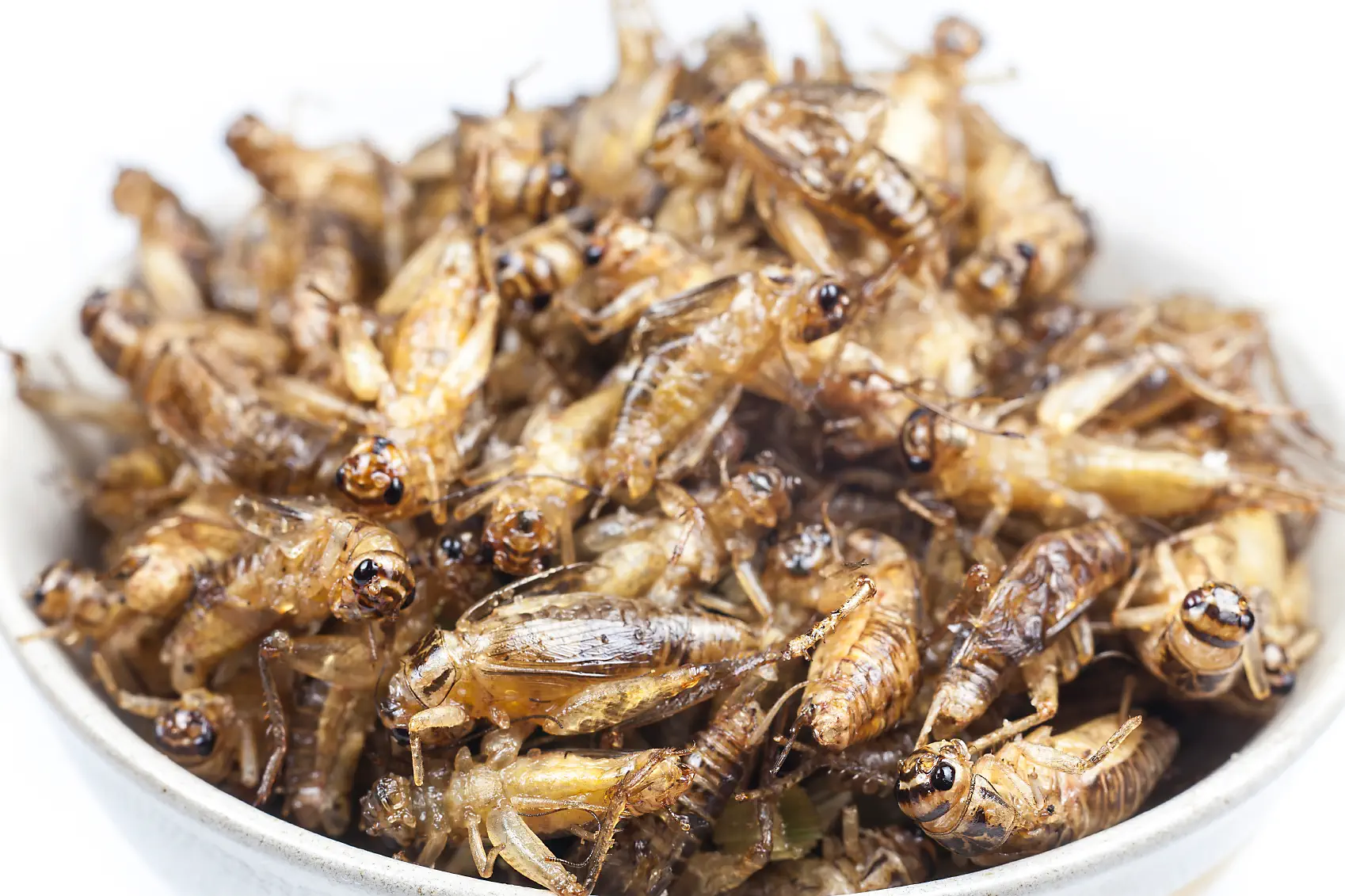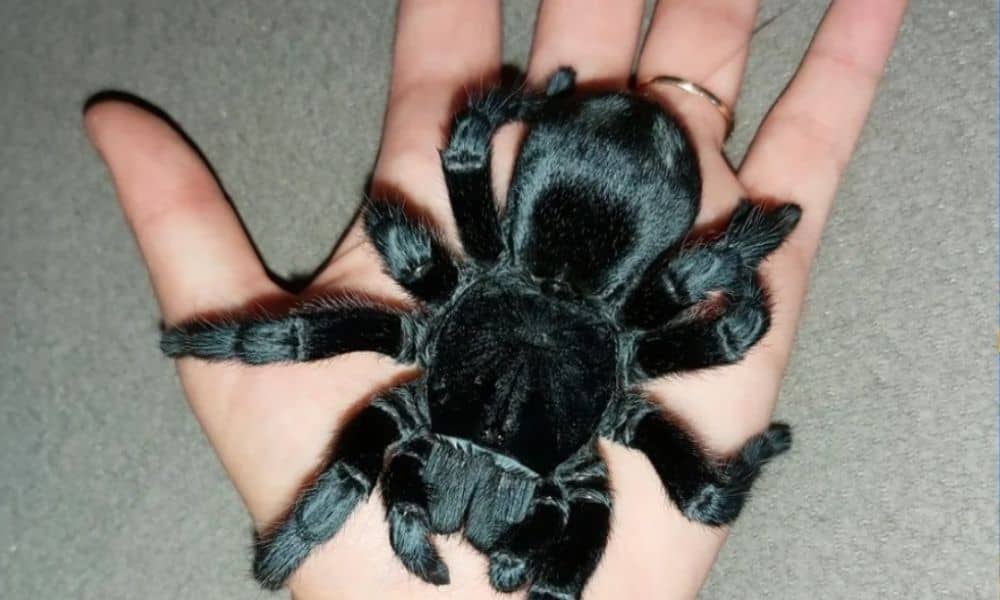The Brazilian black tarantula, known scientifically as Grammostola pulchra, is a fascinating species that captivates arachnid enthusiasts and pet owners alike. The Brazillian Black Tarantula, as its name suggests originates from the grasslands of Brazil.
The Brazillian Black tarantula is also known as “ The black labrador of tarantulas” due to its stunning black color and velvety skin. Another similar-looking species is Grammostola Quirogai, which is mainly found in Uruguay.
This tarantula is commonly known as “ Uruguay Black Beauty “. Both of these tarantula species are prized for their velvety black coat, docile nature, and impressive size, making them one of the most sought-after tarantulas in the world. Owing to its docile nature, it is often called as “Zen Master “ of Tarantula World.
This creature is as intriguing as it is beautiful, and it embodies a host of adaptations that allow it to thrive in its native environment. The spiderlings often take time to attain the attributes of adults and it is a fun experience to raise them as they transform from golden brown to gorgeous black. After 1 ½ – 2” of leg span the coloration of the spiderlings becomes more significant.
It is a slow-moving, New-world tarantula that is very friendly and reluctant to kick hair making it an obvious choice for Tarantula neophytes.

In this detailed exploration, we will delve into the various aspects of this remarkable species – from its stunning physical attributes to its peculiar habits and significant conditions to be taken care of while keeping the Brazillian Tarantula as a pet.
Join us as we unravel the mystique surrounding the Brazilian black tarantula and discover what makes this arachnid a true marvel of nature.
Male Vs Female Brazillian Black Tarantula
The life expectancy of female is much more than their male counterparts. The females can survive for more than two decades in captivity whereas a male can only make it to 6-7 years.
Brazillian Black Male

Brazillian Black Female
The females are more robust and hardy as compared to their male counterparts.

The gorgeous black tarantula with a velvet exoskeleton has some distinctive attributes in males and females in the context of life span, body size, and sexual maturity.

Behavior
Brazilian Black Tarantulas, despite their intimidating appearance, are mainly peaceful arachnids that would sooner flee than face possible danger. They may rise on their hind legs and show their fangs as a warning signal when they feel threatened.
Nonetheless, they are not naturally hostile and will usually bite only in response to provocation or mistreatment. This low- maintenance Tarantula is popular amongst both new and old pet enthusiasts.
The handling should be kept to a minimum to avoid stress and potential injuries. Regular observation from a distance is the best way to appreciate their beauty and behavior. Like all tarantulas, the Brazillian Black has poison and can bite if it feels threatened.
Some have compared the discomfort to a bee sting, but you should use extra caution when handling your tarantula if you have a history of serious allergies to bees.
How To Care Brazillian Black Tarantula?
A Brazillian Black Tarantula must be given suitable housing, appropriate food, a suitable atmosphere, and careful handling.
Here is a thorough care document to assist you in making sure your eight-legged friend is happy. It is an excellent tarantula for beginners as it requires less care.

Enclosure For Brazillian Tarantula
The artificial habitat of the Brazillian Black Tarantula should mimic the wild environment to make your eight-legged companion happy and healthy.
Size Of The Enclosure
The size of the enclosure to be taken should be according to the size of your tarantula. In most cases, the size of the enclosure should be around 3 times the leg span of the tarantula.
For instance, to keep a spiderling, transparent acrylic boxes of dimensions[10x10x12.5cm] will suffice. For juveniles, a 2.5 -5 gallon size terrarium serves the purpose, and for an adult, an 8-10 gallon size enclosure will be apt. An idea about the size of the terrarium can be taken by considering the leg span of the tarantula. The enclosure should be nearly 3 times the size of the leg span so that the tarantula can enjoy free movement inside it.
Since Brazillian black Tarantulas are terrestrial so horizontal space is usually more crucial than vertical space. A cage that is too high can cause falls and needless injury to your pet.
Enclosures With Hideouts
Giving your tarantula places to hide, such as bark, pieces of wood, or even little pots, is a must for your black tarantula. The Brazillian black tarantula will burrow if it is given adequate substrate filled up to a depth of nearly 5-6 inches. It tends to create a coating outside and inside walls with its silk to make the home comfortable for itself.

Range Of Temperature And Humidity
The humidity level for caring for Brazillian Black tarantulas should be between 60 and 75 percent, which is readily accomplished by maintaining a suitable substrate mixture and a tiny water dish.
Sufficient amounts of sphagnum moss, vermiculite, and pesticide-free potting soil can assist in maintaining the right amount of humidity inside your enclosure.
It is best to allow a small amount of spillover while watering your Brazillian Black so that the substrate gets exactly the right amount of moisture; nevertheless, the aim is not to saturate the region to the point that the substrate is continually wet.
The upper layer should be preferably dry and the lower layers can be damp, this helps your tarantula to burrow easily.

The ideal temperature range for this species is between 65 and 85 degrees Fahrenheit. This can be accomplished by putting a heat mat on the side or bottom of the enclosure.
Alternatively, if the room in which your tarantula resides is warm, serves the purpose. Make sure to keep an eye on the temperature to prevent your tarantula from becoming overheated, and in case it does, make sure to provide a cold side of the enclosure. The temperature gradient will help your tarantula to spend time where it found itself more comfortable.
What Does Brazillian Tarantula Eat?
The Brazillian Black tarantula eats a variety of insects, moths, grasshoppers, katydids, beetle larvae, and many more depending on the regions where the tarantulas are thriving.
In captivity, the nutrition is to be given in moderate amounts through some selected varieties of food available at pet stores. Several pet retailers sell flightless fruitflies, Dubia roaches, mealworms, live crickets, and other insects as part of their Brazillian black tarantula diet.
Diet Of The Tarantula
Brazillian Black Tarantula is an enthusiastic eater. It loves to have crickets, mealworms, waxworms, hornworms, phoenix worms, Dubia roaches, and flightless fruit flies and small rodents such as pinky mice, frogs and lizards in its diet.
Crickets
Crickets are a very popular food choice for tarantulas and are easy to find at your local pet store. Vita-Bugs crickets have high nutritional content and are enhanced with vitamin E, vitamin A, beta-carotene, omega-6 and omega-3 fatty acids

Dubia Roaches
Dubia roaches are also a good option which contain up to 28% protein and can make a good meal for larger tarantulas

Waxworms And Mealworms
Mealworms are rich in calcium, phosphorus, and protein but due to large fat content, the amount to be fed should be regulated
Pinky Mouse
A tiny pinky mouse can be a treat for your tarantulas, though many keepers suggest avoiding offering them anything with excessive calcium content.

Nonetheless, the nutrition and quantity need to be determined by the tarantula’s size and should be monitored by a veterinarian. For instance, three to four crickets for juveniles, one medium-sized cricket for slings, and 3-4 crickets for adults can suffice the dietary needs of your tarantula at different stages.
Handling
Even though Brazillian Black Tarantulas are usually calm, it’s advisable to handle them sparingly to avoid tension. There may be differences in the tolerance of different tarantulas.
When handling Brazillan Black tarantula, you should attempt to approach it slowly from the side and steer clear of abrupt movements.
If necessary, use a gentle brush instead of your hands to coax the tarantula to move. Exhaling or blowing on the tarantula may agitate it and increase its stress level, so avoid doing so.

You’ll notice that it raises its mouth and shows its fangs when your tarantula is under stressful conditions. If the abdomen of your tarantula appears wrinkled and shrunken, your Tarantula is likely to be dehydrated.
Molting Of A Tarantula
Molting in tarantulas is the process by which they shed their exoskeleton in order to grow. It’s a crucial part of their life cycle, allowing them to replace their old exoskeleton with a larger one to accommodate their increasing size. During molting, the tarantula secretes fluids that soften the old exoskeleton, making it easier to break free.
Once the old exoskeleton is shed, the tarantula emerges with a soft, vulnerable new exoskeleton. It takes some time for the new exoskeleton to harden, during which the tarantula is particularly fragile and susceptible to injury. After molting, tarantulas often appear brighter in color and may exhibit changes in behavior as they adjust to their new exoskeleton.
When a tarantula is molting, or shedding its skin, extra caution is required. You should take care about, how to care for your tarantula during this transformational process. You should not feed your tarantula during pre-molt and post-molt as the skin of your tarantula is quite tender. Even given food can create devastating effects on the well-being of your tarantula.
Interesting Facts About Brazillian Tarantula
The Brazillian Black Tarantula has always created curiosity among pet enthusiasts for its peculiar behavior.
- The tarantula has got its name due to its dark black color and the location it is found in.
- It has a close resemblance with Uruguay Black Beauty and is often misidentified with it.
- These are the most calm and non-aggressive tarantulas amongst others.
- These tarantulas can reach up to a size of about 8”.

Tarantula Communities
You can find like-minded people having a strong affinity towards these beautiful arachnids and you can join them by clicking on the following links.
- https://www.facebook.com/groups/thetarantulacommunity/
- https://www.tarantulasoftheworld.com/tarantula-communities/
Where To Buy Brazillian Black Tarantula?
The Brazillian Black Tarantula is the most popular amongst hobbyists and can be purchased from a local pet store and online as well. The average cost of the Brazillian Black Tarantula is between $85 to $100.


